A daily work schedule is a tool that helps individuals plan and organize their work tasks, deadlines, and priorities for each day. It visualizes the tasks and activities that need to be completed, allowing individuals to manage their workload efficiently and ensure that tasks are completed on time.
A daily work schedule can promote a better work-life balance by helping individuals allocate time for personal activities and relaxation.
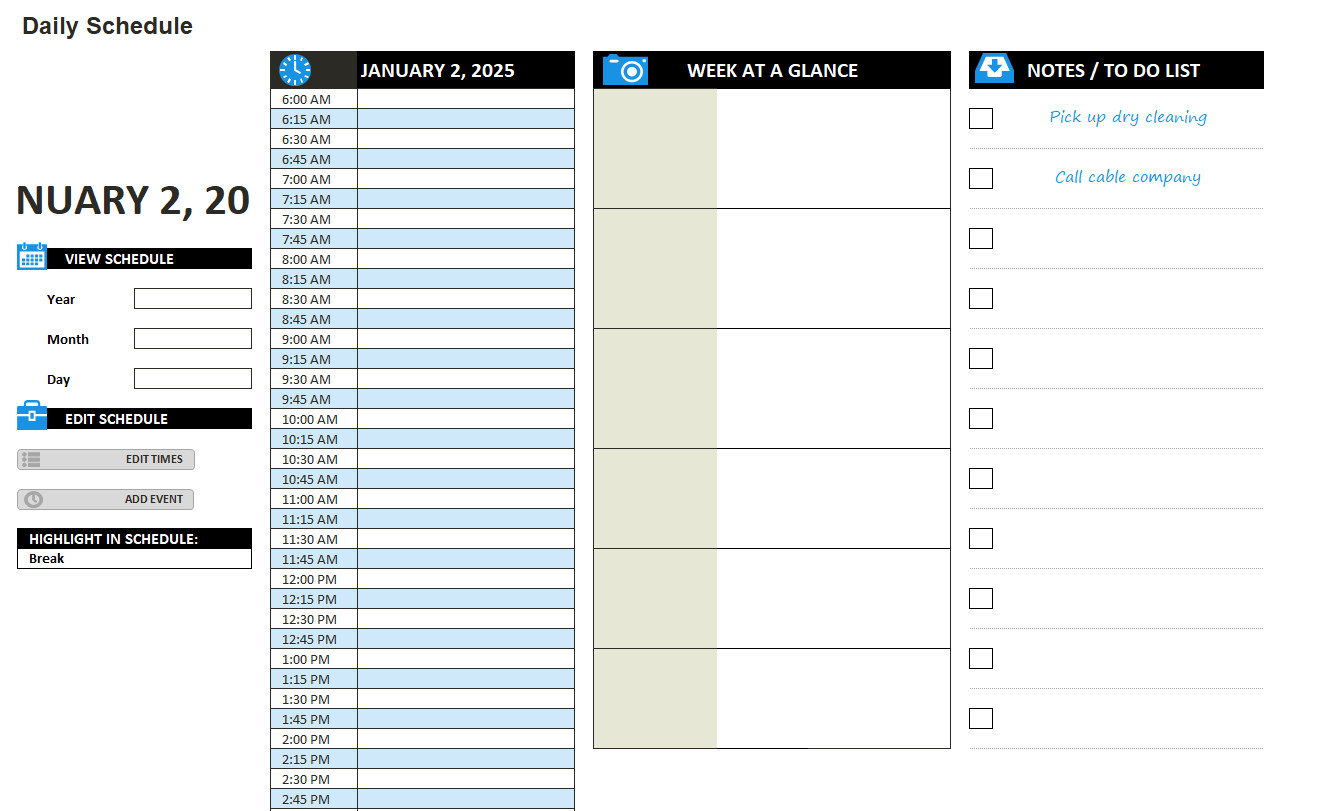
Why is a Daily Work Schedule Important?
A daily work schedule is essential for several reasons.
- Firstly, it improves productivity by providing a clear roadmap for the day. When individuals have a visual representation of their tasks, they are more likely to stay focused and complete their work efficiently. It helps individuals prioritize tasks and allocate time for each activity, ensuring that important tasks are not overlooked or delayed.
- Secondly, a daily work schedule helps individuals manage their workload effectively. By breaking down tasks into smaller, manageable chunks, individuals can avoid feeling overwhelmed and reduce stress. It allows individuals to allocate time for each task based on its complexity and importance, ensuring that deadlines are met without sacrificing quality.
- Furthermore, a daily work schedule promotes a better work-life balance. By allocating time for personal activities, hobbies, and relaxation, individuals can prevent burnout and maintain their overall well-being. It helps individuals create boundaries between work and personal life, ensuring that work does not spill over into personal time.
How to Create a Daily Work Schedule
Creating a daily work schedule is a straightforward process. Here are the steps to follow:
1. Start by listing all the tasks and activities that need to be completed for the day. Be specific and include both work-related and personal tasks.
2. Prioritize the tasks based on their urgency and importance. Identify the tasks that have strict deadlines or require immediate attention.
3. Estimate the time needed to complete each task. Consider factors such as complexity, research, and any potential interruptions.
4. Allocate time slots for each task in your schedule. Be realistic and allow some buffer time for unexpected delays or emergencies.
5. Consider your energy levels throughout the day. Schedule more challenging or creative tasks during your peak energy periods.
6. Include breaks in your schedule to rest and recharge. Breaks are essential for maintaining focus and preventing burnout.
7. Review and adjust your schedule as needed. Flexibility is key, as unexpected events or changes may require you to adapt your plans.
Examples of Daily Work Schedules
Here are a few examples of how a daily work schedule can be structured:
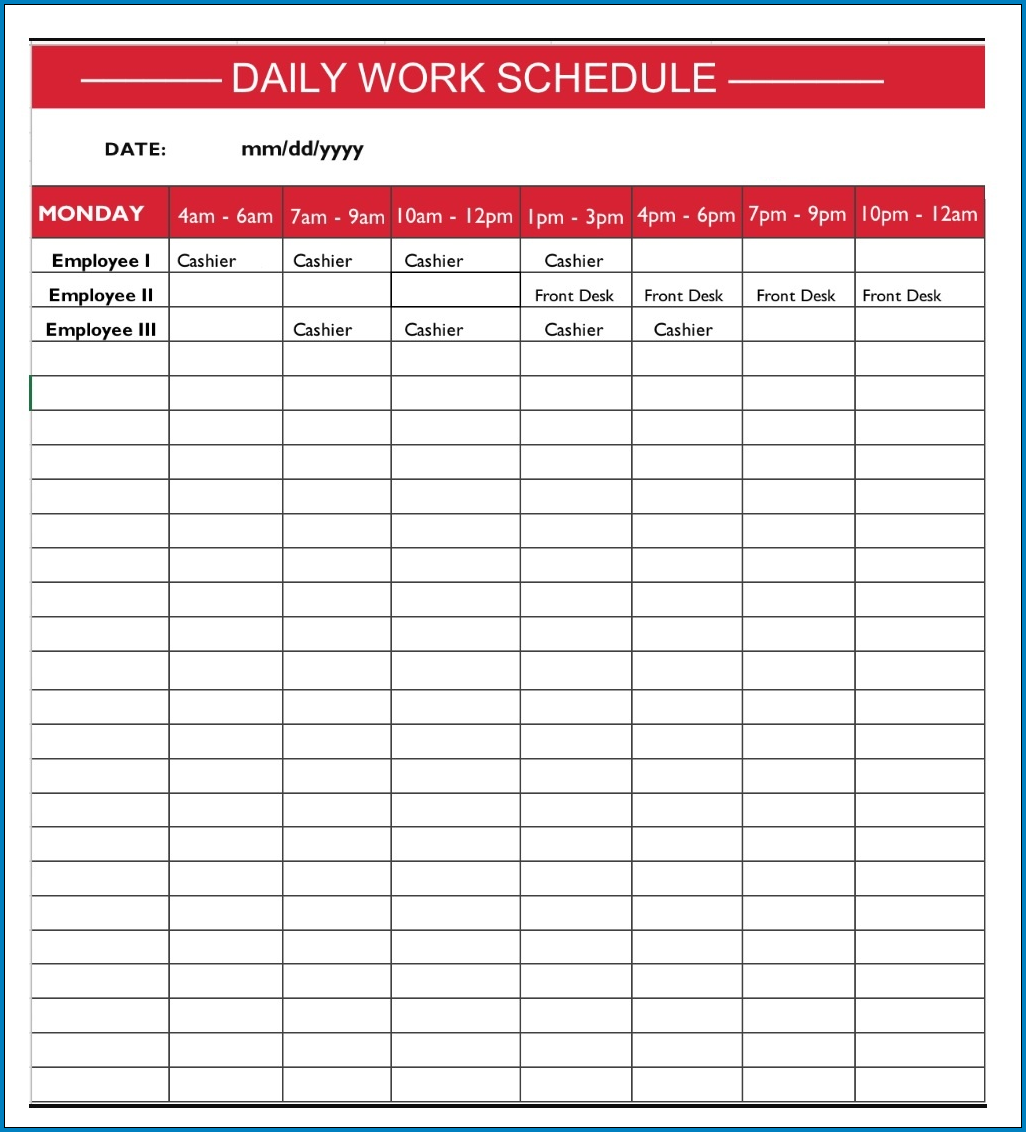
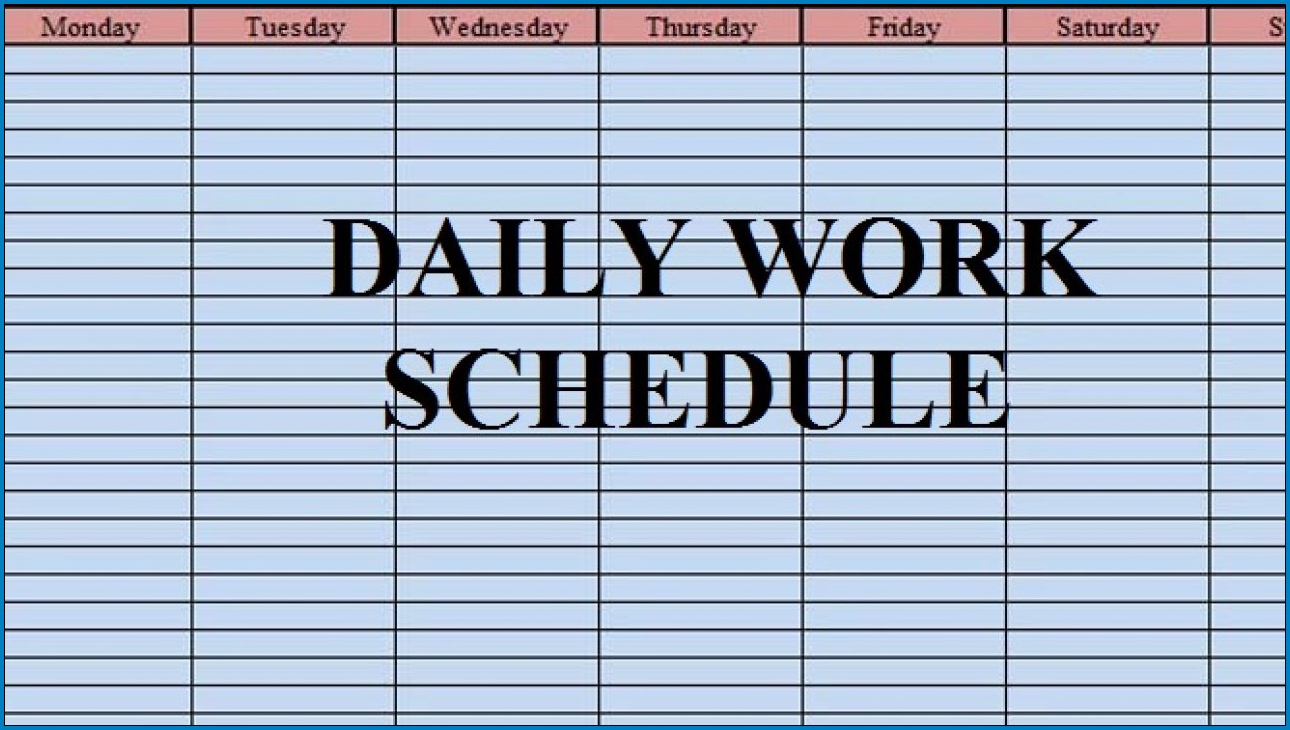
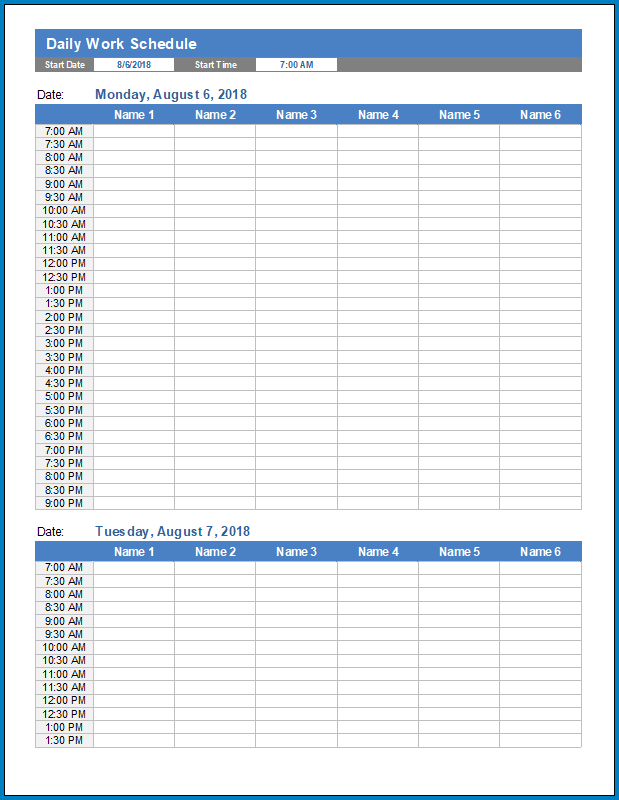
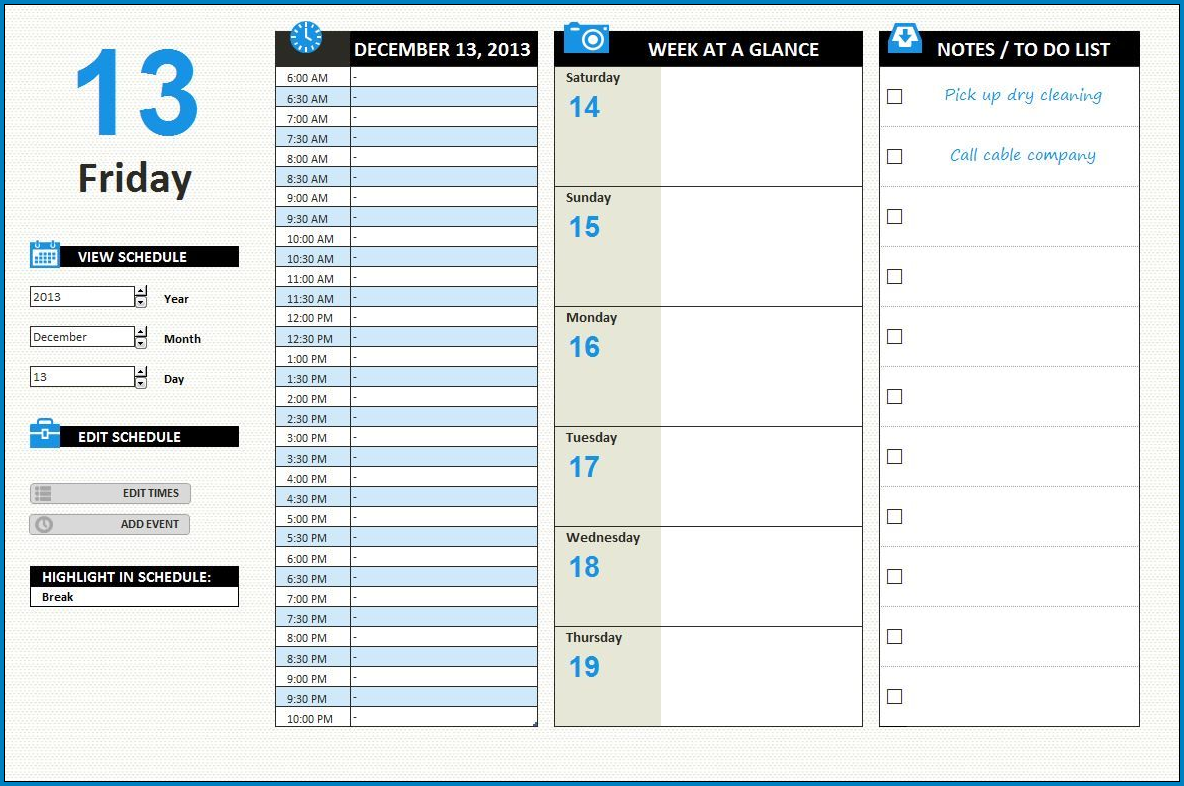
Tips for Successful Implementation of a Daily Work Schedule
To make the most out of a daily work schedule, consider the following tips:
– Be realistic: Avoid overloading your schedule with too many tasks. Be realistic about what can be accomplished in a day to prevent feeling overwhelmed or discouraged.
– Prioritize tasks: Identify the most important and urgent tasks and tackle them first. This ensures that critical work is completed even if unexpected events or interruptions occur.
– Allocate buffer time: Leave some extra time between tasks to account for unexpected delays or emergencies. This helps maintain flexibility and prevents stress when unforeseen events arise.
– Review and adjust: Regularly review your schedule and make adjustments as needed. This allows you to adapt to changing priorities and ensure that your schedule remains effective.
– Use technology: Consider using digital tools or apps to create and manage your daily work schedule. These tools can provide reminders, notifications, and help you stay organized.
– Practice self-care: Remember to include breaks and time for self-care activities in your schedule. Taking care of your physical and mental well-being is crucial for maintaining productivity and work-life balance.
– Celebrate achievements: Acknowledge and celebrate your accomplishments at the end of each day. This boosts motivation and provides a sense of satisfaction, encouraging you to continue following your schedule.
Conclusion
A daily work schedule is a valuable tool for improving productivity, managing workload efficiently, and promoting a better work-life balance. By creating a visual representation of tasks and activities, individuals can prioritize their work, allocate time effectively, and ensure that tasks are completed on time.
Remember to be realistic, flexible, and practice self-care to make the most out of your daily work schedule and achieve optimal productivity and work-life balance.
Daily Work Schedule Template – Download